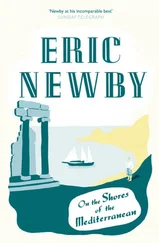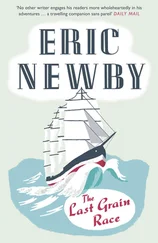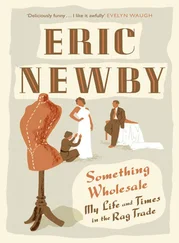Collins English Dictionary
A bike is a very personal thing and the only person who can really judge it is the rider.
The Bicycle Buyer’s Bible , 1985/6
When I was seven or eight I used to have an awful recurrent nightmare about Germans invading England on bicycles.
It was inspired by a story in a germ-laden, pre-First World War magazine which I rescued from a dustbin behind the block of flats we lived in by Hammersmith Bridge in south-west London. In this tale, the Germans were landed on the shores of the Wash under cover of fog – a difficult feat, but Germans were up to it. Instead of horsed cavalry, however, which would have had a pretty glutinous time of it out in the marshes, battalions of them squelched ashore with folding bicycles strapped on their backs.
Once on terra firma these pickelhaubed hordes split up into flying columns and, led by expert local navigators, traitors to a man, of whom there were inexhaustible supplies even before 1914, swept through the fog-bound low country at a terrific rate. In the course of the following night they seized all the principal cities of the Midlands, including Birmingham. (‘Only ninety kilometres as the crow flies, Herr Hauptmann,’ said some unspeakable turncoat, clicking his heels.) Cambridge fell without a shot being fired, which was not surprising considering its subsequent record – or was it the long vacation? Other columns were directed towards the metropolis. At this point the narrative ended. It was a serial and by the time I went back to have another dig in the dustbin to find the sequel it had been emptied.
They must have been foiled in the end because we later won the Great War, but for years I had this terrifying vision of Germans with spiked helmets pedalling swiftly and silently over Hammersmith Bridge in the night, finding my bedroom and spitting me on their bayonets like a knackwurst .
It was therefore to some extent paradoxical that the swiftness and silence of the bicycles about which I had dreamt with such horror, as irrational as the horror of whiteness described in Moby Dick , but equally real, were the very qualities which subsequently attracted me to this form of transport, and turned me into a keen cyclist and owner of many bicycles of varying degrees of splendour.
My first really good bicycle was a second-hand Selbach which I bought from a boy at school for £3 – it would have cost about £12 new. I was heartbroken when it was stolen from the school bicycle shed. Selbachs were the Bugattis of the cycle world. The frames were made from tapered tubes which, although almost paper thin, were immensely strong, and they were fitted with Timken roller bearings instead of conventional ball-bearings. The lightest machine Selbach built is in the Science Museum in London. He flourished between the wars, and was far ahead of his time. He was killed when the front wheel of his bicycle got stuck in a tramline in South London; he didn’t even rate an obituary in The Times. Ever since the 1890s, when for a time it was fashionable, though never as a competitive sport, cycling had been and still is hopelessly déclassé. Even today the only socially acceptable bike for a member of the British upper crust is one that looks as if it has been retrieved from a municipal rubbish dump, and probably has.
The finest bicycle I ever had was a Holdsworth which my father allowed me to order when I was sixteen. He had arranged with a Swiss business acquaintance of his called Mr Guggenheim that I should work in his silk firm in Zurich in order to learn the business and the German language, and no doubt he thought that cycling up and down the Alps would keep my thoughts in wholesome channels. It was a model called Stelvio, and was specially designed for cycling in the Alps.
It was hand-built in a small shed at the back of Holdsworth’s shop in Putney by a thin, energetic, chain-smoking genius with wispy hair and a terrible cough. He had lined the walls of the shed with a really wonderful collection of pin-ups all of which displayed enormous tits; presumably to stimulate him to even greater activity. They certainly stimulated me. It was the finest bicycle procurable at that time and it cost a colossal £20. The day I took delivery of it I remember him bouncing it up and down on its over-size hand-made tyres as if it was a ping-pong ball.
‘Luvly job,’ he said, with a cigarette stuck to his lower lip. ‘A real iron. Go out and give them Alps a bashing. Funny to think I’ll never see ’em.’
I never saw the Alps either, let alone gave them a bashing. The arrangement with Mr Guggenheim was shelved when my father found out that the kind of Schweitzerdeutsch they spoke in Zurich was so extraordinarily funny that if real German speakers heard it they fell about. I never dared tell the creator of the ‘iron’ that the furthest I got was the Black Mountains on the Welsh border.
In the war I rode huge bicycles with 28″ wheels that weighed 60 lbs or more, of the sort still popular in parts of India and Africa. At the Royal Military College, Sandhurst, which I attended in 1940, a special drill had been invented for riding these monsters:
‘Number One Platoon!’ (or whatever it was) ‘’Arf Sections Left! Prepare to Meount! … Meount! ’ And we would wobble off into the asylum country round Broadmoor.
Wanda’s affair with the bicycle was very different from mine. For her there was, and still is, a Platonic, archetypal bicycle, the first one she ever had. It was the sort of bicycle on which droves of girls used to cycle past the prison camp in which I was incarcerated in the Po Valley, near Parma, during the war. Similar droves were to be seen riding through the equally flat countryside around pre-war Ferrara in Visconti’s film The Garden of the Finzi-Contini .
It was a single-speed lightweight roadster with an open frame, raised handlebars fitted with a wicker basket and a back pedalling brake on the rear wheel, the upper part of which was covered with thin cords to prevent the wearer’s skirt becoming entangled in it, which made the whole thing look like some archaic stringed instrument on wheels.
It was a present to her from her godmother on her sixteenth birthday. Originally she had given her a wristwatch but Wanda displayed such obvious disappointment on receiving it that her godmother eventually wrung from her the confession that what she really longed for was a bicycle. Unfortunately Wanda’s godmother had no idea how much a bicycle cost, and the money she gave Wanda in lieu of the wristwatch was totally insufficient to buy even a good second-hand one, which was why Wanda’s bicycle came to be made up of salvaged parts, re-assembled by the village bicycle repairer. In spite of this it was a good bicycle, with a frame made by the still excellent firm of Bianchi.
Because of all this Wanda had the fierce affection for her bicycle that most people reserve for the living. So when the Germans occupied Italy in September 1943, and her father was arrested by the Gestapo as an anti-Fascist, her bicycle was impounded as an additional punishment, to which she took strong exception. Eventually she succeeded in tracking it down to a German military headquarters at Salsomaggiore, a spa miles away from where she lived in the foothills of the Apennines, to which literally thousands of confiscated bicycles had been taken.
‘You have stolen my bicycle,’ she said without preamble to the first German officer she encountered there, who happened to be a colonel taking a turn in the open air.
‘What, me?’ he said in genuine astonishment, saluting. ‘Why should I take your bicycle? I have no need of a bicycle.’
‘Well, if you didn’t take it your soldiers did. My father was in the Austrian Imperial Army. He never stole ladies’ bicycles.’
Читать дальше












